Dispatch: 'A bad officer can just laugh' - George Floyd's killing and Minneapolis police failures
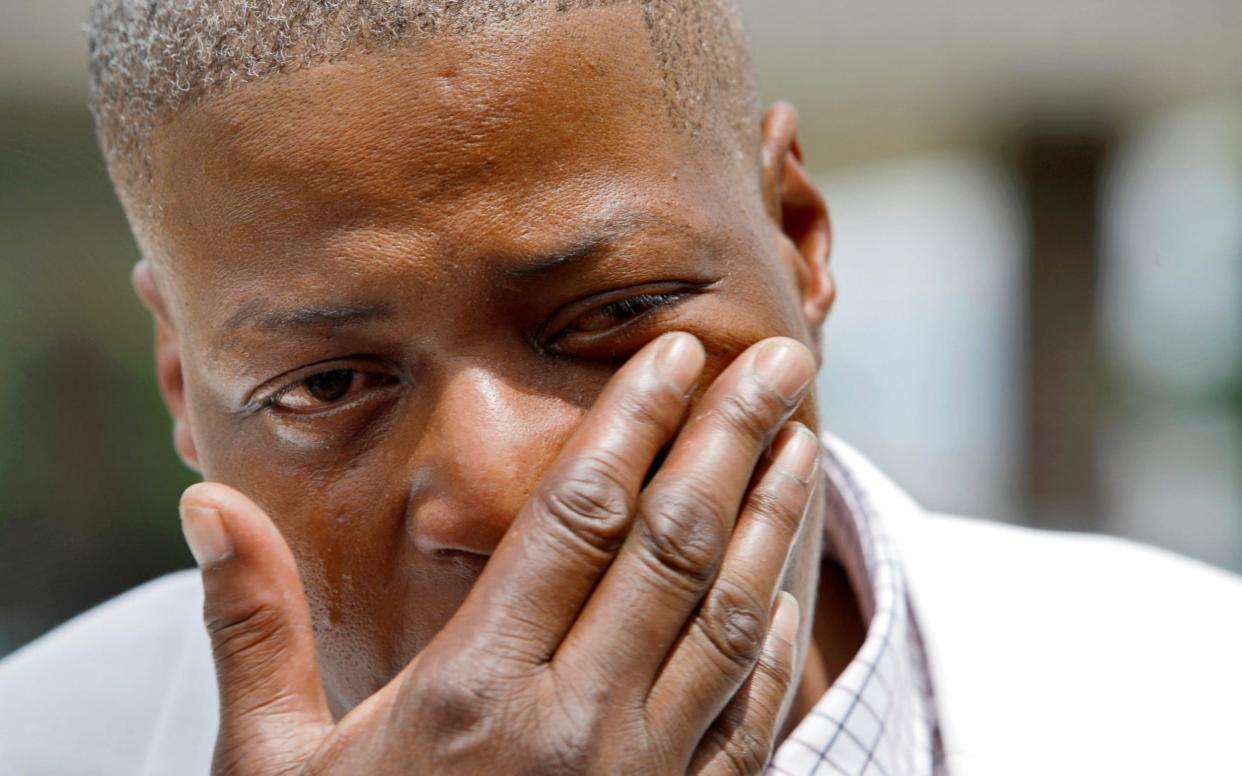
On Sept 9, 2010 David Cornelius Smith, 28, an unarmed black man, died face down on a YMCA basketball court in Minneapolis as a white officer knelt on him for four minutes.
Police had been called because Mr Smith was "throwing a basketball aggressively”. No criminal charges were brought, and the officer was not disciplined.
No one on the court had a smartphone and there was little coverage of the incident, even locally. America has not heard the name of David Cornelius Smith.
A decade later, two miles away, and in remarkably similar circumstances - they both suffocated - George Floyd, an unarmed black man, died on a street corner beneath the knee of Derek Chauvin, a white officer.
Bystanders filmed it, and America erupted in protest.
But, shocking as it was, Mr Floyd's death was no isolated case.
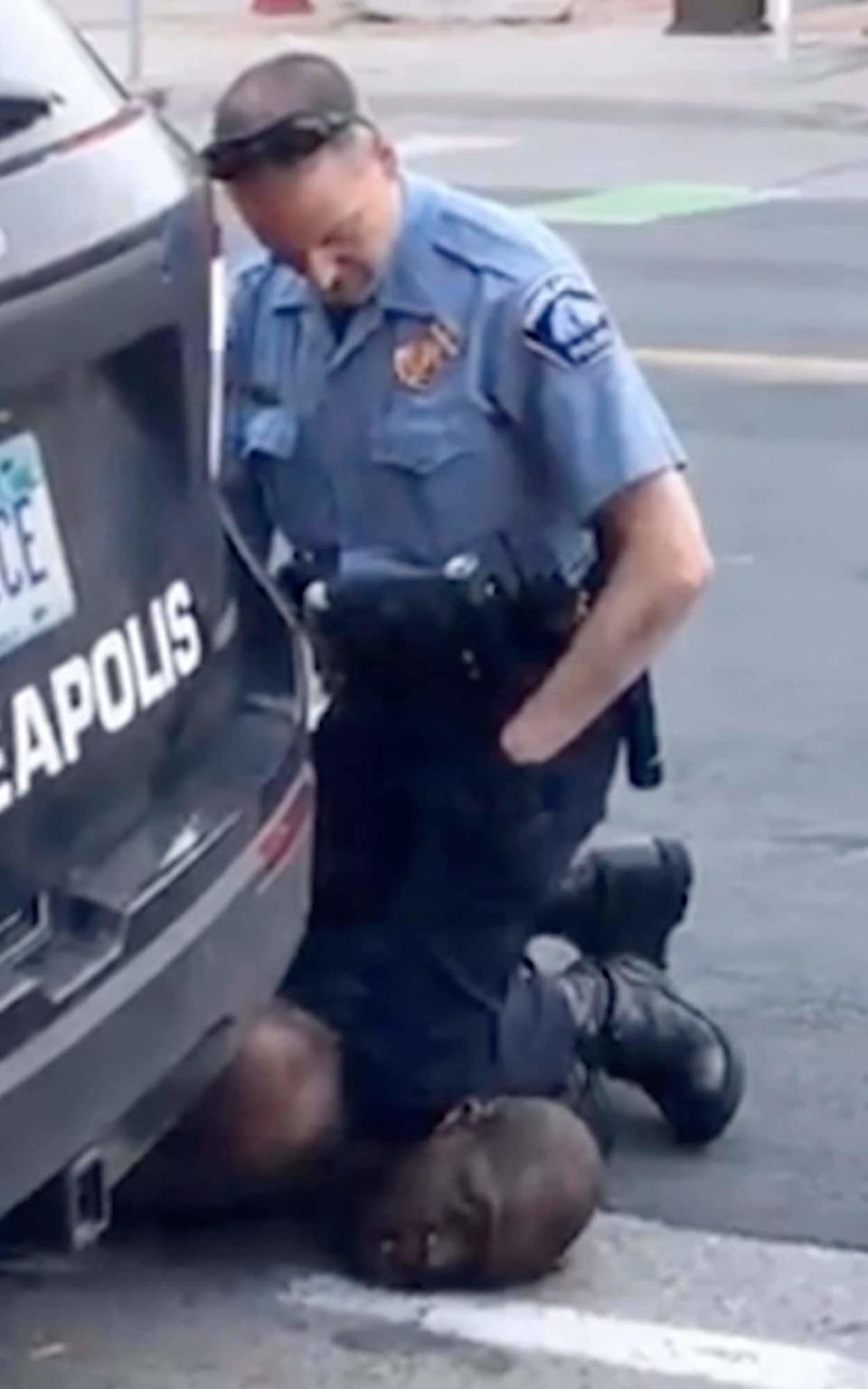
Instead, he was just the latest victim of systematic failings, entrenched interests, militaristic police training methods, and toothless oversight mechanisms that have plagued Minneapolis, and many other US police departments, for decades.
While violent, racist officers are undoubtedly a few bad apples, the system that is supposed to police them is itself, according to critics, rotten to the core.
On Saturday, dozens of demonstrators made their views plain to the mayor of Minneapolis: booing him out of the protest when he refused to promise to defund the police.
"The source of the problem is there is just no accountability," David Bicking of the Minneapolis-based Communities United Against Police Brutality [CUAP] campaign group, told The Daily Telegraph.
"People here say they're going to file a complaint and a bad officer can just laugh at them. We have so little discipline it's a joke
"That leads directly to Derek Chauvin. It’s why he thought he could keep his knee on someone's neck, in front of a crowd, knowing he's being videoed. It comes from a culture of impunity, that 'I can do anything I want to do' and there are no consequences."
Mr Bicking used to sit on Minneapolis's civilian review board for police complaints.
It would recommend punishments for officers, but was often ignored by police chiefs.
In 2012 Minneapolis, unusually in America, switched to a hybrid oversight system, further diluting civilian input.
The new Office of Police Conduct Review consisted of civilians and police.
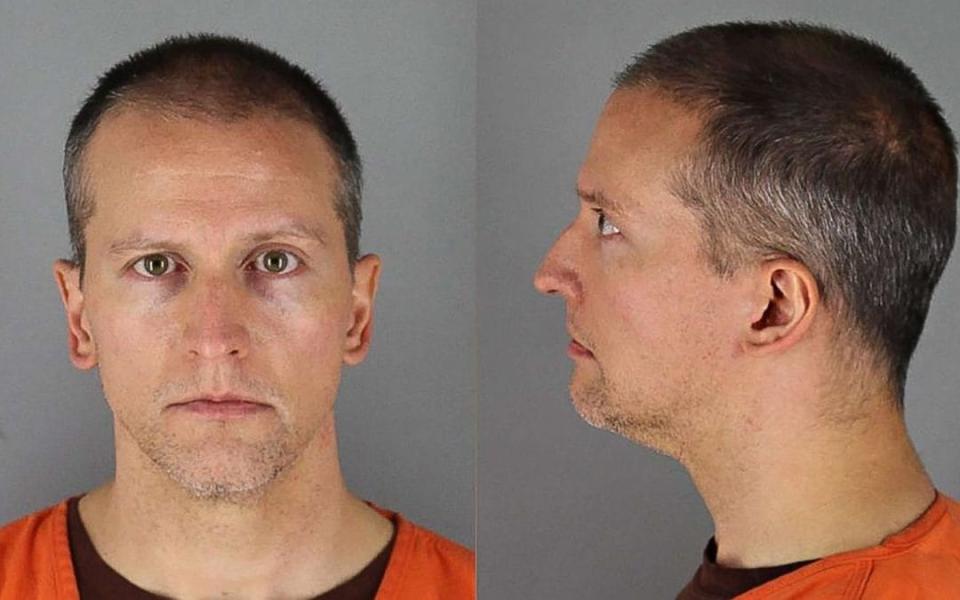
Disciplinary figures since then are startling. According to the CUAP there have been over 4,600 complaints from members of the public against Minneapolis's 800 police officers.
The total number resulting in discipline was just 12 - or about 0.5 per cent.
In seven of those cases officers were suspended. The longest suspension was just 40 hours.
Police officials dispute the figures. The outcome of police departments' own investigations into officers depends largely on the aggressiveness of their Internal Affairs units.
In Minneapolis, Internal Affairs looked into 17 complaints against Chauvin over two decades.
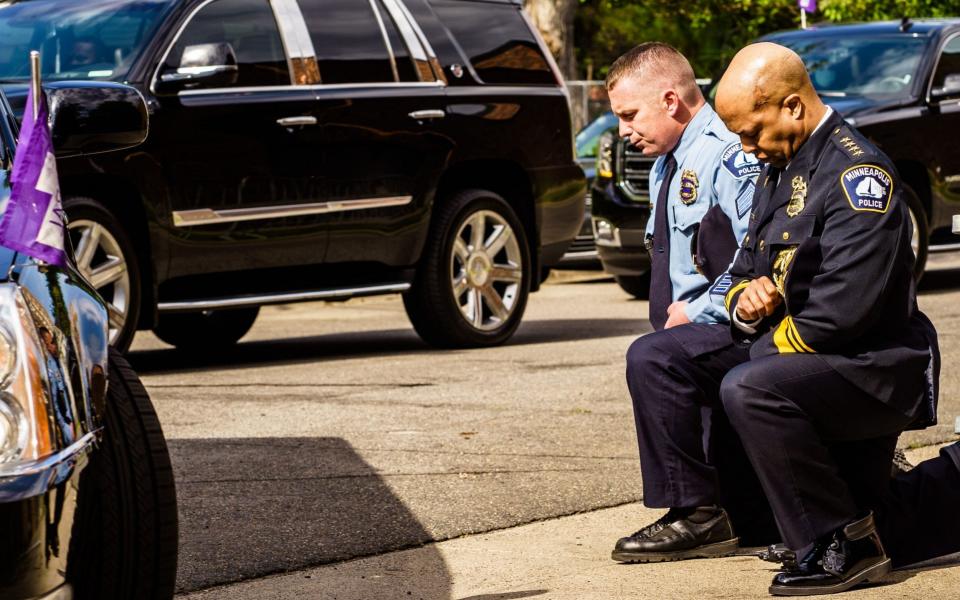
He had been involved in three shootings, one fatal. He once shot an unarmed suspect twice in the stomach.
But 16 of the complaints were dismissed, and he was only reprimanded for the other.
When Internal Affairs units do act decisively against their own, there is an appeal process.
In the state of Minnesota, over the last five years, 46 per cent of police and prison officers who have been sacked were reinstated on appeal.
That is partly because the appeal panel bases its decisions on precedent, meaning that an act of force, or racist language, that was deemed acceptable decades ago must also go unpunished in 2020.
Over the last several years some of the most high profile police killings in America have taken place in, or near, Minneapolis.
In 2015 Jamar Clark, a 24-year-old unarmed black man, was shot dead by two white officers outside a party.
The following year Philando Castile, 32, who was black, was shot five times in his car. His girlfriend livestreamed the aftermath on the internet.
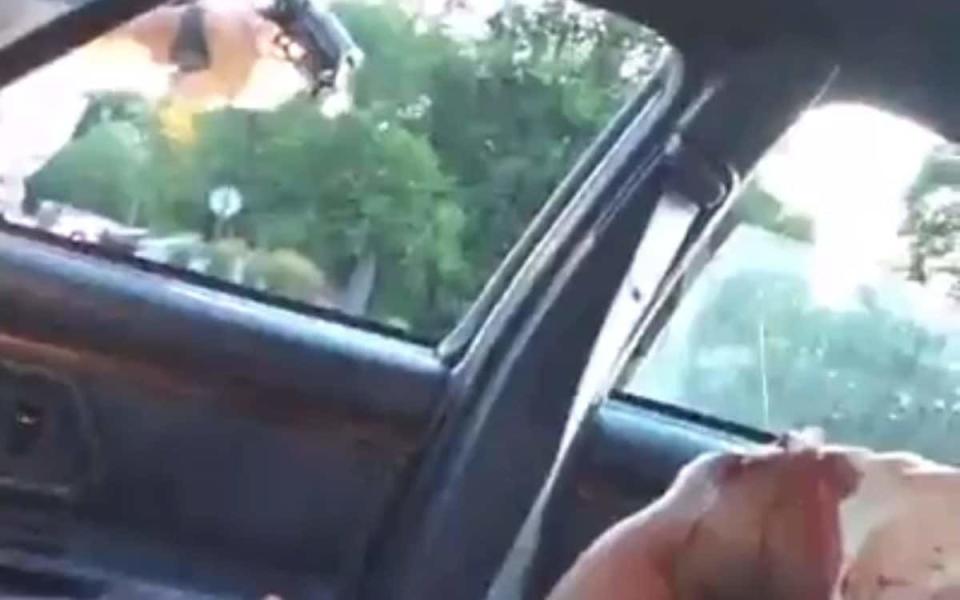
The officer in that case was acquitted of manslaughter, highlighting how difficult it remains for prosecutors to obtain convictions.
In cases of deadly force, including when Chauvin comes to trial, juries have to consider whether a police officer was in "reasonable fear" for their life. The vast majority of jurors have not been in such a situation, and are reluctant to "armchair quarterback" an officer.
Much of what has happened in Minneapolis, and elsewhere in the US, has been attributed by justice campaigners to military-style training of police officers.
Conducted by private security contractors, it teaches them to treat everyone they encounter as a potential mortal threat.
The officer who shot Philando Castile had been through such a course, called "Bulletproof Warrior". It is not known if Derek Chauvin had.
Banning the city's officers from “Bulletproof Warrior” last year Jacob Frey, the Democrat mayor of Minneapolis, called it a "killology" that "violates the values at the very heart of community policing."
Sam Walker, an expert on police accountability, said: "It [the course] is OK for Green Berets but unacceptable for domestic policing."
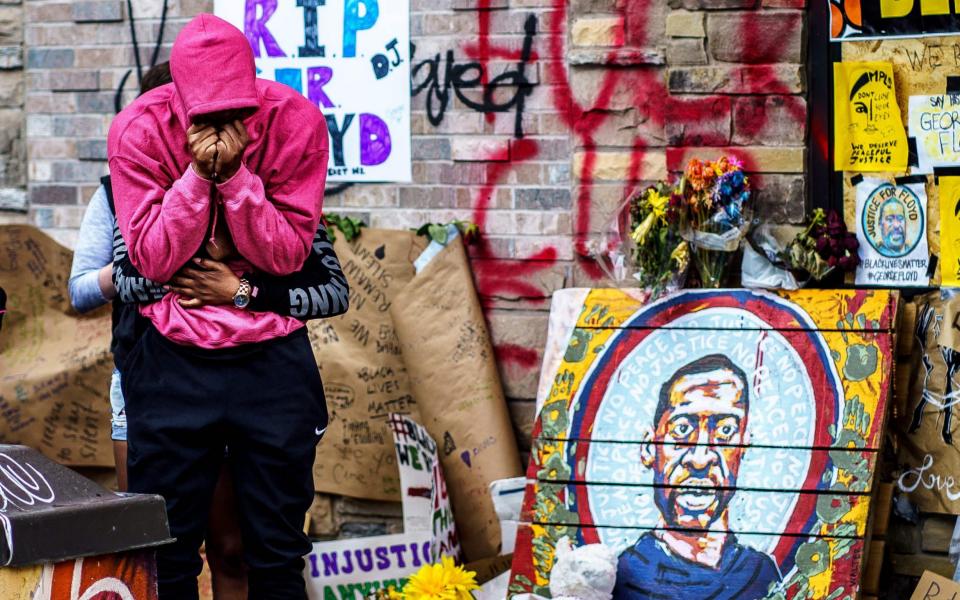
There are also wider issues with police training across America. Police academies, on average, spend more than 100 hours instructing officers on how to shoot guns and self-defence, and a total of only 16 hours on community policing, mediation, and conflict management.
And despite the controversial nature of neck restraint as a tactic - it is banned in many large police departments - officers in Minneapolis have used it 428 times since 2012.
In 58 of the cases the person has been rendered unconscious. Two thirds of those it was used on were black, while less than 20 per cent of the city's population is black.
The story of Minneapolis's current police chief - the first black man to lead the overwhelmingly white force - starkly illustrates its historic race problem.
In 2007 Medaria Arredondo was one of the "Mill City 5" - five black officers who sued their own force for discrimination. They described "watching every day actions of white officers against citizens of colour".
Mr Arradondo went on to head Internal Affairs, and in 2017 became the police chief after the shooting of Philando Castile.
However, his attempts at reform have run into deeply ingrained opposition, chiefly from Lieutenant Bob Kroll, the president of the Police Officers Federation of Minneapolis, which represents rank-and-file officers.
The fissure runs deep. Lt Kroll, a SWAT team veteran who has himself been the subject of 29 police complaints, was named numerous times in Mr Arredondo’s 2007 discrimination case.
It was alleged that Lt Kroll called Keith Ellison, Minnesota's black Muslim attorney general, a "terrorist,” which he denied.
The union leader, who appeared at a rally with Donald Trump in October, has vehemently opposed banning “Bulletproof Warrior,” saying: "It’s not about killing, it’s about surviving."
Following the death of Mr Floyd he wrote to members saying the deceased man had a "violent criminal history," and vowing to "fight for the jobs" of officers “terminated without due process” over the incident by Mr Arredondo.
“Everybody seems to know how to do our job better than us,” said Lt Kroll.

